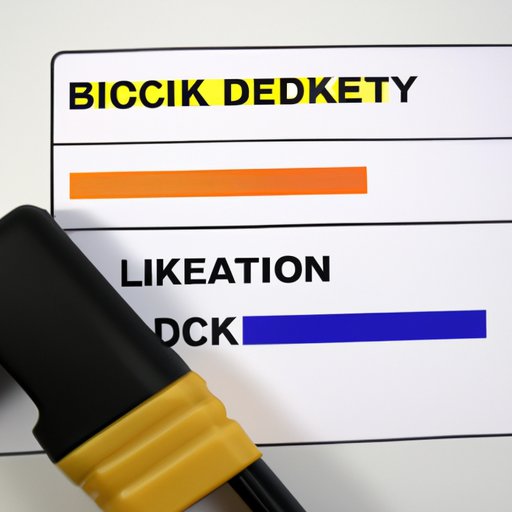
Introduction
If you’ve been convicted of a DUI or related offense, you may be required to use an interlock device as a condition of driving again. Interlock devices are breathalyzers that are installed in your vehicle, requiring you to pass a test before the car will start. While these devices can be a helpful tool in keeping the roads safe, there are legal limits to interlock violations that drivers need to be aware of. This article will explore how many interlock violations you can have, common offenses and consequences, best practices for maintaining your device, and legal options for those who face violations.
Understanding Interlock Violations: Common Offenses and Consequences
Interlock violations occur when a driver fails a breathalyzer test or tampers with the device. Common offenses that can result in a violation include trying to start the car after consuming alcohol, having someone else blow into the device for you, or disconnecting the device entirely. Consequences for interlock violations vary from state to state, but can include fines, extended use of the device, license suspension, or even jail time.
Breaking Down the Numbers: How Many Interlock Violations Can You Have?
State laws regarding interlock violations vary, but most have a limit on how many violations a driver can have. In some cases, a driver may be given a certain number of strikes before facing further consequences. For example, in California, a driver is allowed one interlock violation before facing additional jail time or an extended use of the device. In other states like Florida, a driver can face license suspension if they receive two interlock violations within a period of five years. It’s important to understand the legal limits in your state and abide by them to avoid further consequences.
Play by the Rules: Best Practices for Maintaining an Interlock Device
If you’re required to have an interlock device, it’s important to understand your responsibilities as a driver. This includes regular maintenance and proper usage of the device. Tips for avoiding violations include avoiding alcohol consumption completely, making sure you have enough time for the device to register your sobriety before starting the car, and avoiding any attempts to tamper with or disconnect the device. Proper maintenance includes regular calibration and cleaning to ensure accurate readings.
The Cost of Non-Compliance: Fines, License Suspension, and More
The consequences of non-compliance with interlock device usage can be severe. Fines and fees can add up quickly, with some states charging up to $100 per violation. License suspension can last for months or even years, and can impact your ability to work or fulfill daily responsibilities. In some cases, non-compliance can result in an extension of the interlock requirement, meaning you’ll have to use the device for an even longer period of time.
Real People, Real Consequences: Stories of Interlock Violation and Their Impacts
Interlock violations can have a significant impact on a driver’s daily life, as well as their ability to stay on the right side of the law. Personal accounts of people who have experienced interlock violations can provide insight into the consequences of non-compliance and the importance of responsible device usage. Stories range from missed job opportunities and financial difficulties to serving additional jail time.
Know Your Rights: Legal Options for Those Facing Interlock Violations
If you’re facing an interlock violation, it’s important to understand your legal options. Some states allow drivers to contest violations through administrative hearings or appeals processes. Others may require a court appearance and the assistance of an attorney. The role of attorneys in interlock cases can include contesting violations, negotiating plea deals, and helping drivers navigate the legal system. Knowing your legal options can help you make the best decision for your situation and minimize the impact of a violation.
Conclusion
Understanding how many interlock violations you can have and the consequences of non-compliance is essential for safe and responsible use of your device. By following best practices, including proper maintenance and avoiding common offenses, you can minimize your risk of violating interlock laws. If you do face a violation, knowing your legal options and seeking the assistance of an attorney can help you navigate the process and minimize the impact on your driving privileges. Remember that the ultimate goal of interlock requirements is to keep the roads safe, and by abiding by the laws you’re contributing to a safer driving environment for everyone.




